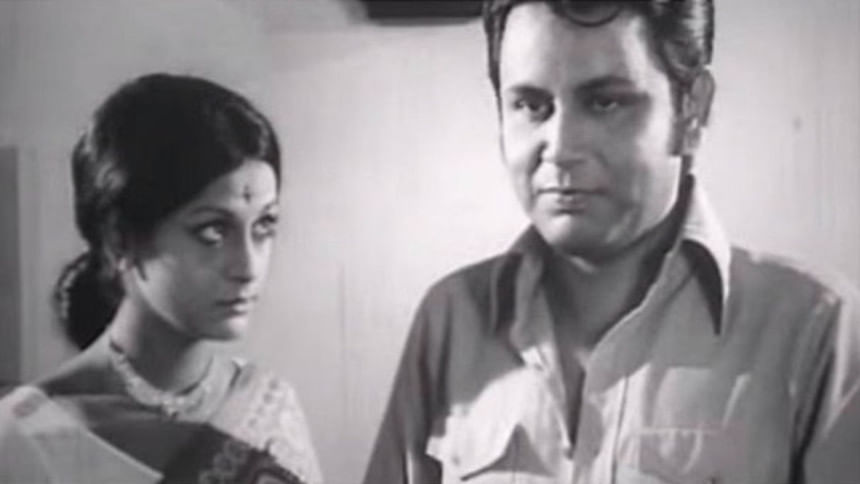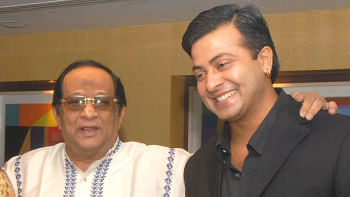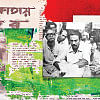‘Shurjokonna’: A classic reflection on women, freedom, and power

Labannya, a mannequin who comes to life in the imagination of the artist Lenin in Alamgir Kabir's classic film "Shurjokonna" (1975), subsequently delivers a most unforgettable scene in it. She recollects a mythological past.
"Once," she says, "The 'Shurjokonna' (daughters of the Sun) wandered freely, filled with joy, their days luminous with being alive. But those very beings they nurtured with love and life eventually turned into tyrants."
"Men, intoxicated by power, imprisoned the daughters of the sun in the darkness of time. What followed was an era of enslavement—women reduced to child-bearing machines, objects of consumption, stripped of individuality."
This conversation between Lenin (played by Bulbul Ahmed) and Labannya (Jayasree Kabir) is not simply a fictitious dialogue—it is a profound metaphor for the loss of women's freedom under patriarchal civilisation.
Filmmaker Kabir uses the mannequin to symbolise women's suppressed desires and voices, exposing how society often forces them to exist as lifeless dolls under male authority.
Lenin, the film's central figure, is a struggling painter ridiculed by his wealthy father and prosperous doctor-brother for failing to achieve worldly success. Lenin, however, dreams of an egalitarian world, unlike them. In his imagination, he delivers fiery speeches at the historic Racecourse Ground, demanding food, shelter, education, and healthcare for all.
He may not physically fight against the injustices of society, but through his art and small acts of kindness, he resists. His very name, drawn from Vladimir Lenin, underlines Kabir's ideological framework—the dream of a socialist utopia.
In contrast, Lenin's friend Russell (Ahsan Ali Sydney) embodies the patriarchal order. He seduces his shop's assistant manager, Monika (Rajasree Bose), by being charming outwardly, and she responds to his love. Upon her bringing up the conversation of marriage, Russell reveals his true perspective—he sees love as pleasure, marriage as a burden, and Monika as nothing more than an object.
Their heated exchange not only exposes Russell's chauvinism but also reveals Monika's sharp sense of dignity and her yearning for independence. Rejecting his insult, she chooses self-reliance, even resigning from her job at his shop.
Meanwhile, in Lenin's imagination, Labannya, the mannequin, becomes his companion—walking with him by the sea and meeting him in different places. In the haunting song "Ami Je Adhare Bondini", Labannya yearns to break free from her inanimate existence, to live as a real human being. Here Kabir's metaphor expands—the mannequin's longing for freedom becomes the universal cry of women everywhere.
Visually, "Shurjokonna" was ahead of its time. Using animation, Kabir illustrated the evolution of human society, the rise of capital, and the corresponding confinement of women—a daringly experimental move for Bengali cinema of the 1970s.
What makes Lenin's character particularly striking is his quiet rebellion against social conventions. In a society where brothers are expected to guard their sisters' romantic lives, Lenin does the opposite—he secretly delivers love letters from his sister's penniless poet-lover, believing in the beauty of poetry over material success.
Thus, "Shurjokonna" unfolds through two parallel storylines: Lenin and Labannya, Russell and Monika. Both arcs ultimately circle back to the same truth—the quest for women's liberation.
Alamgir Kabir's choice to keep Labannya as a mannequin rather than a living woman is telling. It is not mere surrealism but a deliberate metaphor: women forced to live as lifeless figures under patriarchy. Yet, through her voice, Kabir gives life to suppressed desires, making Labannya's cry for freedom a universal expression of women's struggle.
Half a century later, "Shurjokonna" remains as urgent and relevant as ever. Its themes of suppression, individualism, and the longing for liberation transcend time. Even after 50 years, the film continues to pulse and endure for generations to come.

 For all latest news, follow The Daily Star's Google News channel.
For all latest news, follow The Daily Star's Google News channel. 









Comments